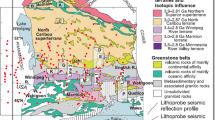Abstract
In this paper, some recent topics on the modeling of magnetotelluric data are introduced. The focus is on the handling of real field data for two-dimensional resistivity modeling. First, the removal of the effects of near surface heterogeneity is reviewed. It covers telluric distortions (phase mixing and static shift) and magnetic distortions using conventional Groom-Bailey type 3D/2D model (three-dimensional local anomaly underlain by regional two-dimensional structure). The extension of a 3D/2D distortion model for multi-site, multi-frequency is a new development. Magnetic distortion seems to be less significant for land observations, but significant for sea floor data, where the regional magnetic field is weak due to seawater. In special cases involving for example, distortion due to topography and bathymetry, explicit removal is possible. There are some schemes proposed for a 3D/3D model (three-dimensional local anomaly underlain by regional three-dimensional structure). Along with the removal of the distortion, it is important to recognize the dimensionality of the dataset prior to modeling. A property using strike estimates for each site is an indicator for dimensionality which is unaffected by local distortion. Mapping the local strike or a rose diagram is an effective visualization of the dimensionality.
Two-dimensional inversion is becoming routine. For the fast calculation of derivatives, approximate calculation, reciprocity or conjugate gradient methods are used. In order to incorporate a priori information and to overcome the intrinsic ill-posed nature of the inversion problem, imposing constraints on the model structure is important. A proper tradeoff between the data fit and constraints should be optimized to obtain minimum structures that are required by the field data. However, the choice of constraints is rather subjective and depends on the geological situations. For field data, two-dimensional inversion has limits on modes, area, and period range. Special care must be taken for the structure outside the profile. Two-dimensional inversion incorporating anisotropy is interesting and becoming popular, but the structure may not be unique. Future development in three-dimensional inversion for real datasets should take the above points into consideration.
Similar content being viewed by others
Author information
Authors and Affiliations
Rights and permissions
About this article
Cite this article
Ogawa, Y. On Two-Dimensional Modeling Of Magnetotelluric Field Data. Surveys in Geophysics 23, 251–273 (2002). https://doi.org/10.1023/A:1015021006018
Issue Date:
DOI: https://doi.org/10.1023/A:1015021006018




